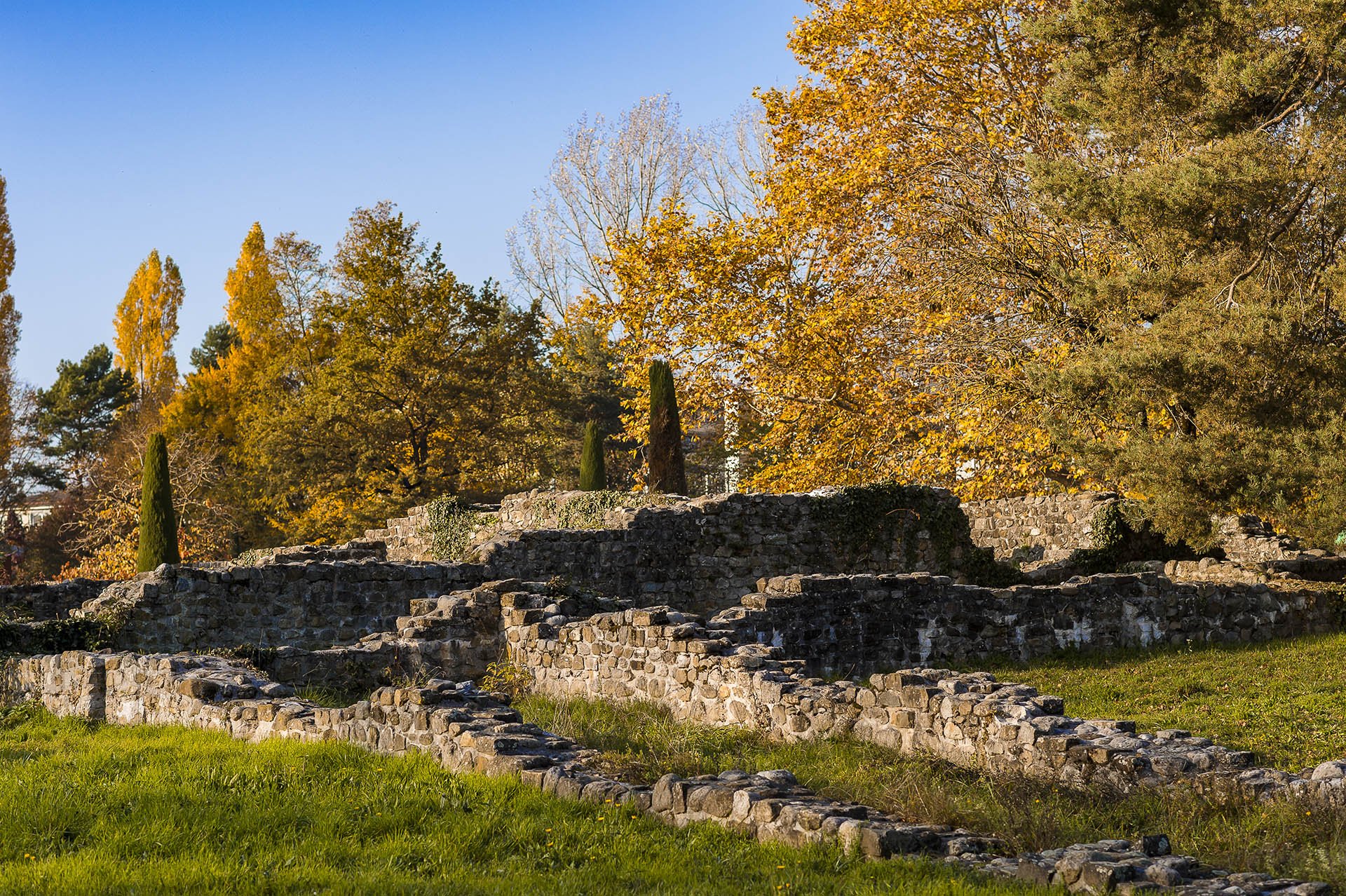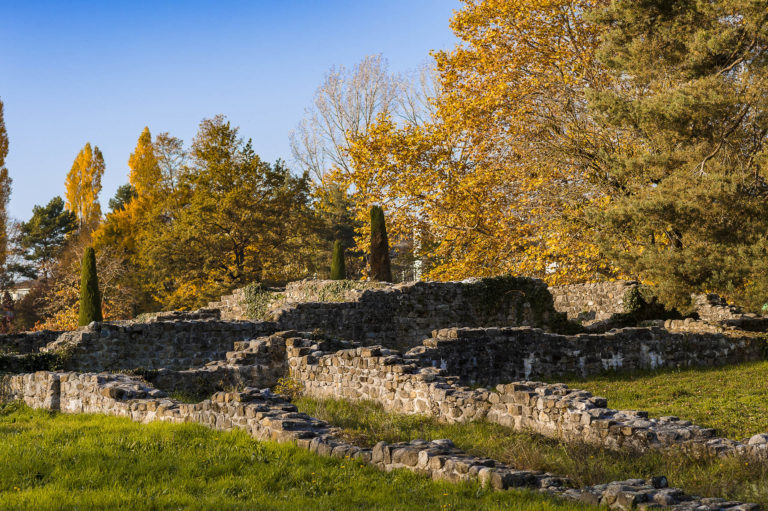

From antiquity to the medieval city
Origins
Some weapons, carved flint and hearths are the first signs of occupation on the site of Lausanne, by the lake (Vidy) but also on the hill, the future seat of the cathedral. These traces are over 8000 years old. Some villages were established by the water about 4000 years before our era. In the only case of its kind in Switzerland, more than 200 graves were dug in Vidy between 4300 and 3300 B.C. From the start of the 2nd millennium, menhirs were erected nearby by these new farmers who worked with copper and tin and who preferred to cremate their dead. Between the years 1000 and 800 B.C. the densely populated lakeside location lost its appeal and faded before the Gallo-Roman revival.
Roman period
The settled Celtic peoples in the region, little known, fell under Roman rule in the year 15 B.C. The vicus (settlement) of Lousonna (Celtic name) was founded. The ancient town rapidly accommodated more than 1500 inhabitants. A theatre was built in the outlying districts, while the richer homeowners settled on the sides of the hill across from the lake. A port with a dam allowed the lake to be used for trade. At the end of the 1st century A.D. the dynamism of Lousonna was reflected in the presence of a forum with basilica, sanctuary and temple. After two centuries of prosperity, the Roman peace crumbled. Over the course of the 4th century, huge numbers of the population left the lake to take refuge on the hill of the Cité, the new castrum (fortified camp). The amount of space available to the population, much reduced in comparison to ancient Lousonna, gave rise to the Cité being divided into very compact parcels, which would shape the area well into the medieval era.
High Middle Ages
The failure of the Roman administration was not synonymous with anarchy. The Christianisation of the world was accompanied by new territorial divisions. Lausanne was incorporated into a diocese in 517. The Bishop moved to the Cité at the end of the 6th century, and the town became an episcopate. The people of Lausanne, who had lived as refugees on the spur of Cité hill until the 9th century, spread into the surrounding area. New districts called bannières (Palud, Bourg) thus sprang up. Supported by the kings of Burgundy, the Bishop – prince of the empire from 1032 – consolidated his temporal power in the area, while religious orders became established in the town. In the 12th century, the lake once more lay at the heart of commercial activity, thanks to the port of Ouchy protected by a castle.
Low Middle Ages
The medieval town reached its maximum size back in the 13th century, when Lausanne had nearly 9,000 inhabitants, a figure that was unsurpassed in all of French-speaking Switzerland at the time. The cité, a place of pilgrimage, was in its heyday then, symbolised by the consecration of the Gothic cathedral in 1275. The European crisis of the 14th century touched Lausanne, which became depopulated, allowing the more fortunate to extend their urban properties. Repeated confrontations consequently brought the Bishop and the bourgeoisie face to face. Political unity in the town eventually took shape in 1481 with the introduction of a municipal autonomy founded on conventional rules contained in the Plaict Général dated 1368. In 1525, the municipal authorities signed a traité de combourgeoisie (treaty of alliance) with the cities of Fribourg and Berne, an important gesture that would open the way for the Protestant Reformation.



